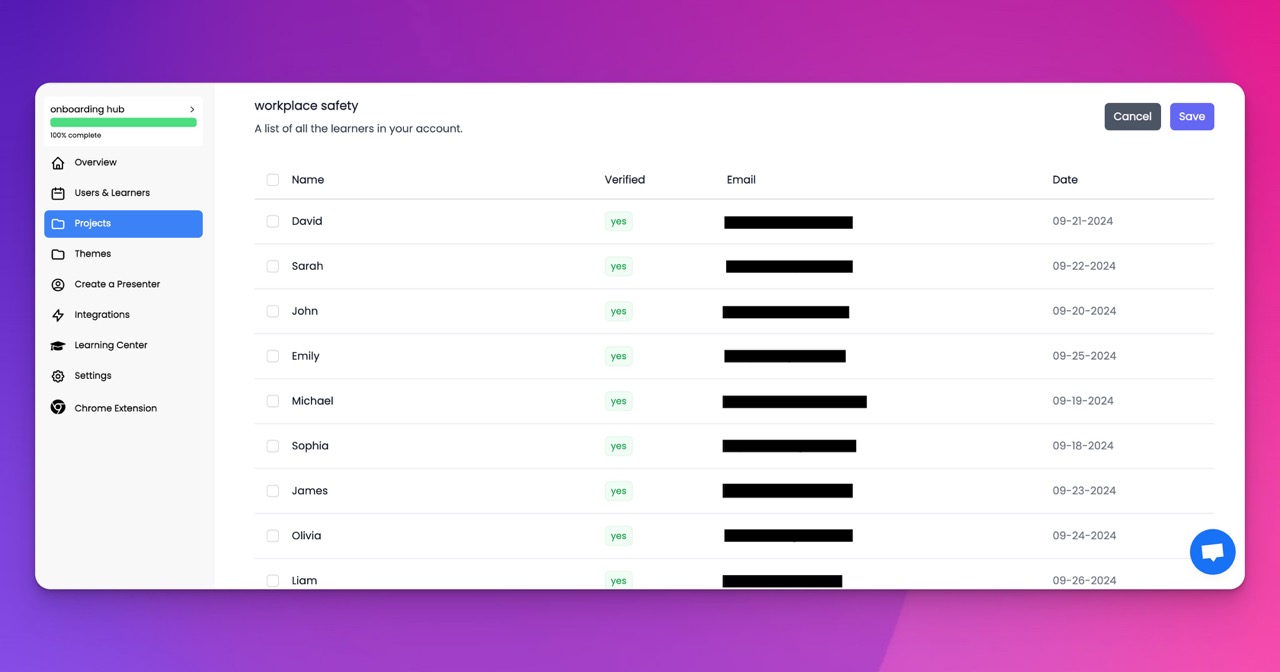🎉 Trainday now integrates with Zendesk and Hubspot 🎉 Trainday now integrates with Zendesk and Hubspot 🎉 Trainday now integrates with Zendesk and Hubspot
🎉 Trainday now integrates with Zendesk and Hubspot
🎉 Trainday now integrates with Zendesk and Hubspot
Contact
Airlines
Addressing the Challenges of High Turnover in the Airlines Sector
Addressing the Challenges of High Turnover in the Airlines Sector: Leveraging Data and Artificial Intelligence for Efficient Employee Training
The airline industry is known for its high employee turnover rates, which can significantly impact operational efficiency and customer satisfaction. To combat this challenge, airlines are increasingly turning to data and artificial intelligence (AI) to create relevant and effective training courses for their employees. By harnessing the power of data and AI, airlines can streamline the training process, reduce time-to-competency, and ultimately improve employee retention. In this blog post, we will explore how data and AI can revolutionize employee training in the fast-paced aviation industry.
1. Identifying Training Needs:
Effective training starts with understanding the specific needs of employees. Airlines can leverage data analytics to identify knowledge gaps and areas that require improvement. By analyzing performance data, customer feedback, and employee surveys, airlines can gain valuable insights into where training efforts should be focused. This data-driven approach ensures that training courses are tailored to address the specific challenges faced by employees, leading to more impactful results.
2. Personalized Learning Paths:
One size does not fit all when it comes to employee training. To cater to individual learning styles and preferences, airlines can utilize AI to create personalized learning paths for their employees. AI algorithms can analyze employee profiles, past performance data, and career goals to recommend the most relevant and effective training modules. This allows employees to maximize their learning potential and fosters a sense of empowerment and engagement.
3. Adaptive Learning Platforms:
AI-powered adaptive learning platforms can revolutionize the way training is delivered in the airline industry. These platforms use machine learning algorithms to continuously assess employee performance and adapt the training content accordingly. By monitoring the progress of each employee in real-time, the platform can identify areas where additional support or reinforcement is needed. This ensures that employees receive training that is relevant, timely, and tailored to their individual needs, improving learning outcomes and reducing time-to-competency.
4. Virtual Reality (VR) Training:
Virtual reality has emerged as a powerful tool for employee training, particularly in the aviation sector. Airlines can leverage VR technology to create immersive and realistic training scenarios, such as emergency simulations or aircraft maintenance procedures. This allows employees to gain hands-on experience in a safe and controlled environment, enhancing their skills and confidence. VR training can significantly reduce the time required for practical training, enabling airlines to quickly onboard new employees and address the demand for skilled workers.
5. Continuous Learning and Feedback Loop:
Data and AI can facilitate a continuous learning and feedback loop in the airline industry. By analyzing employee performance data, airlines can identify areas where additional training is required or where existing training modules need improvement. AI-powered feedback systems can provide instant feedback to employees, highlighting areas of strength and areas for improvement. This iterative process ensures that training programs remain relevant and effective in a rapidly evolving industry.
Conclusion:
High turnover rates pose significant challenges for the airlines sector, but data and AI offer promising solutions. By leveraging the power of data analytics, personalized learning paths, adaptive learning platforms, VR training, and continuous feedback loops, airlines can create relevant and efficient employee training programs in record time. These innovative approaches not only enhance employee skills and competencies but also contribute to higher job satisfaction and retention rates. As the airline industry continues to evolve, embracing data and AI-driven training methods will be crucial for staying ahead of the curve and ensuring a skilled and motivated workforce.
Accelerate Compliance.
Deliver OSHA-Ready Courses Instantly.
Empower your team with data-driven training solutions tailored to your industry's safety standards. Stay compliant, reduce risks, and boost productivity with AI-powered course creation.
